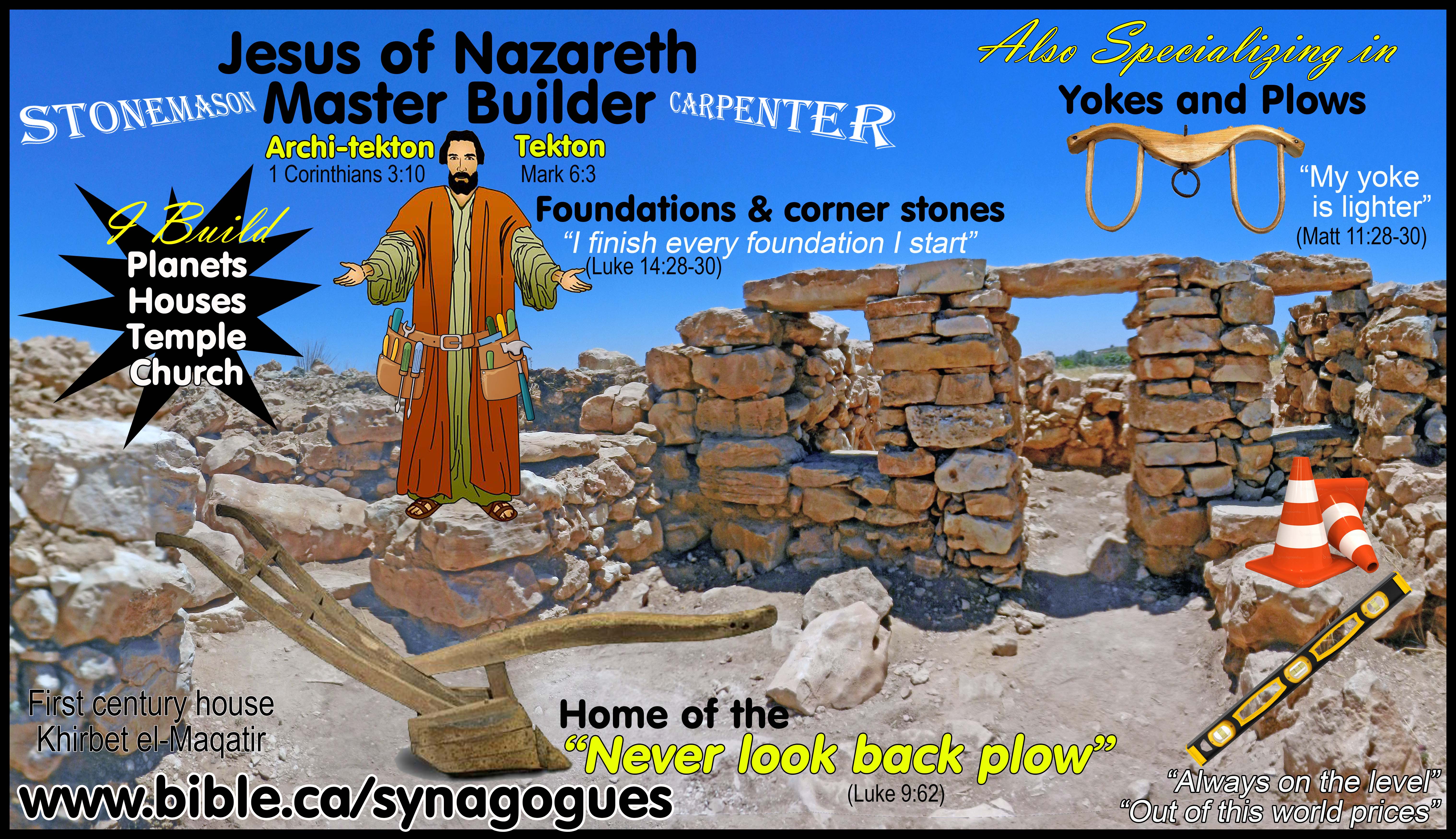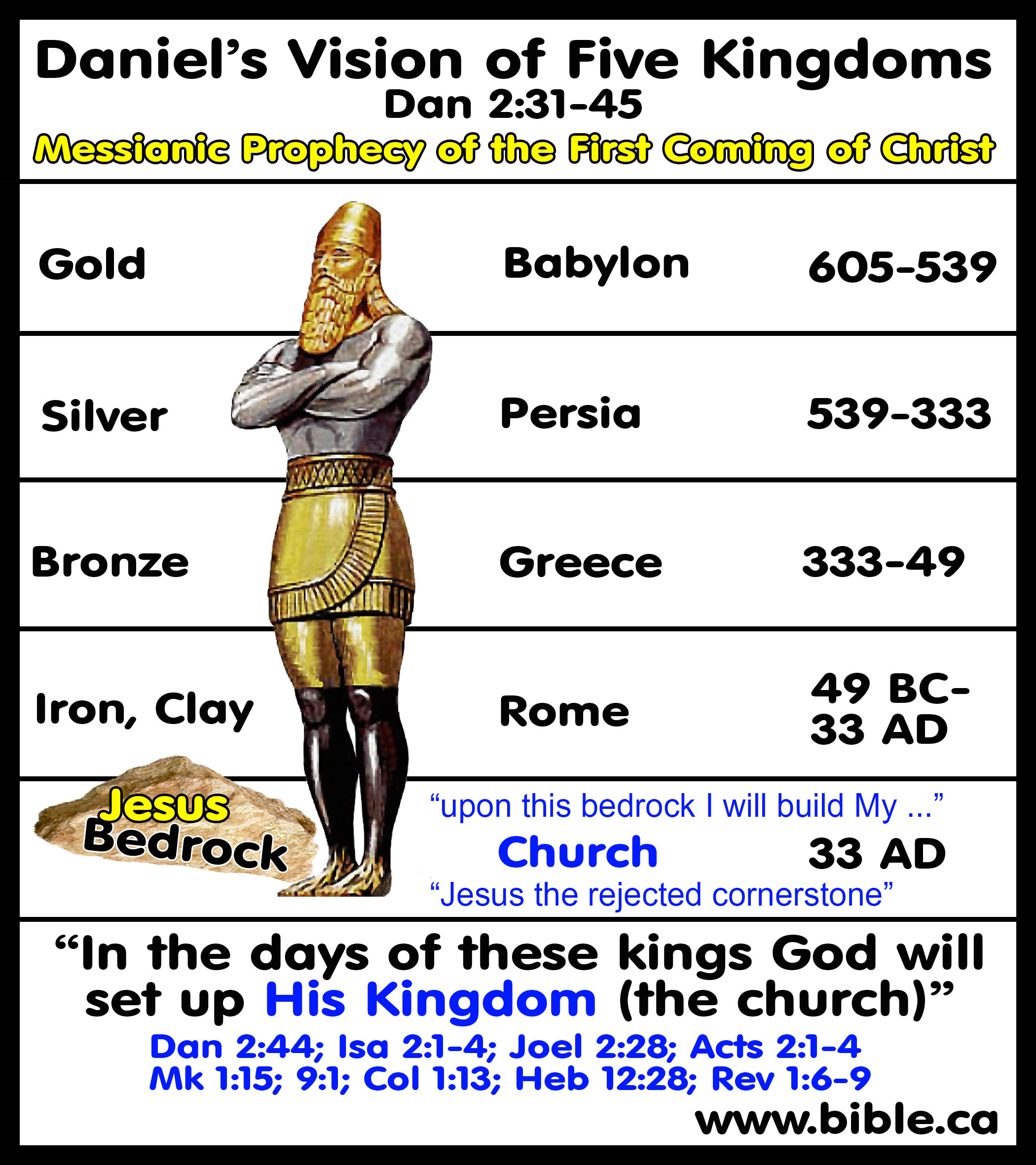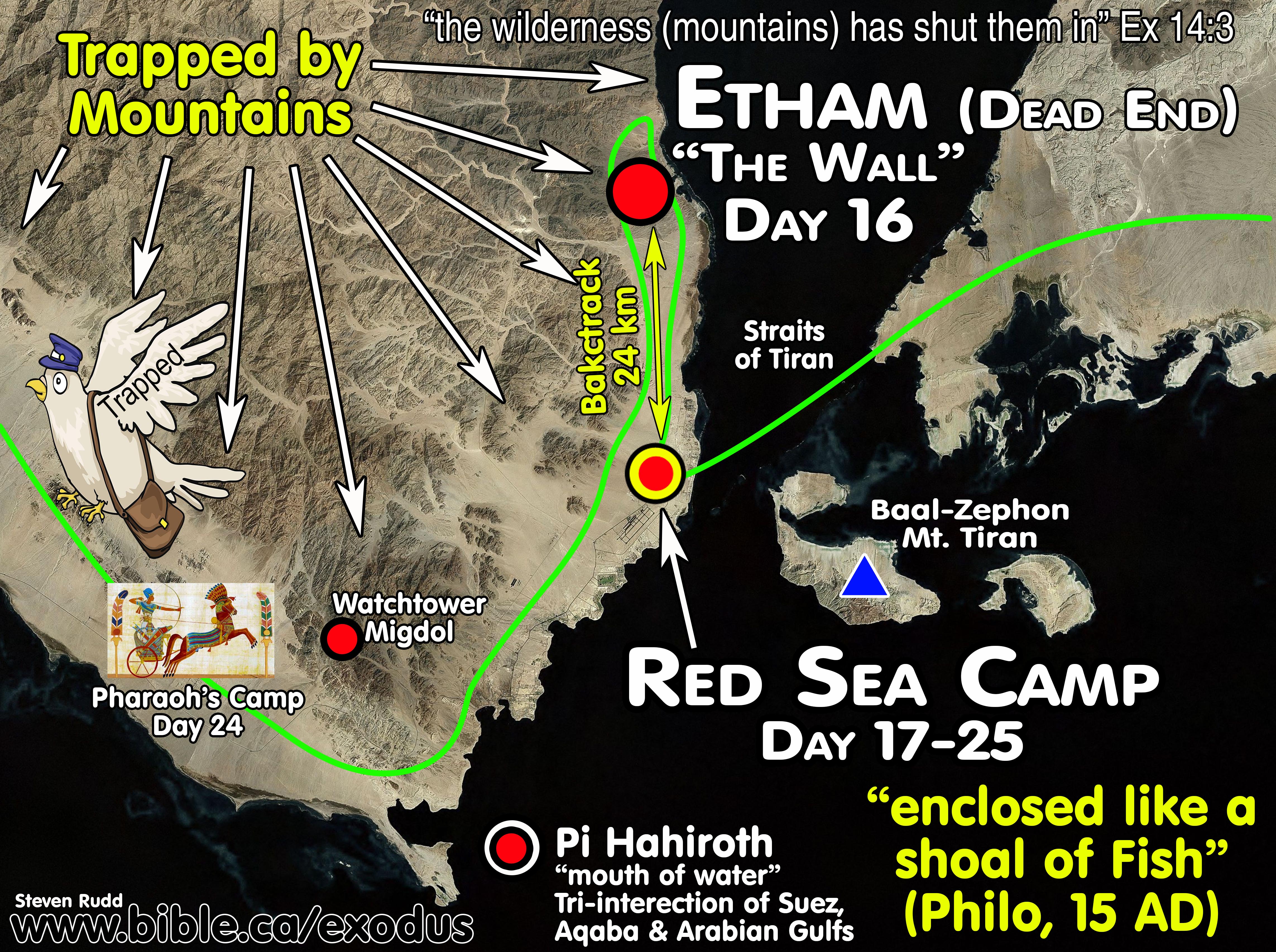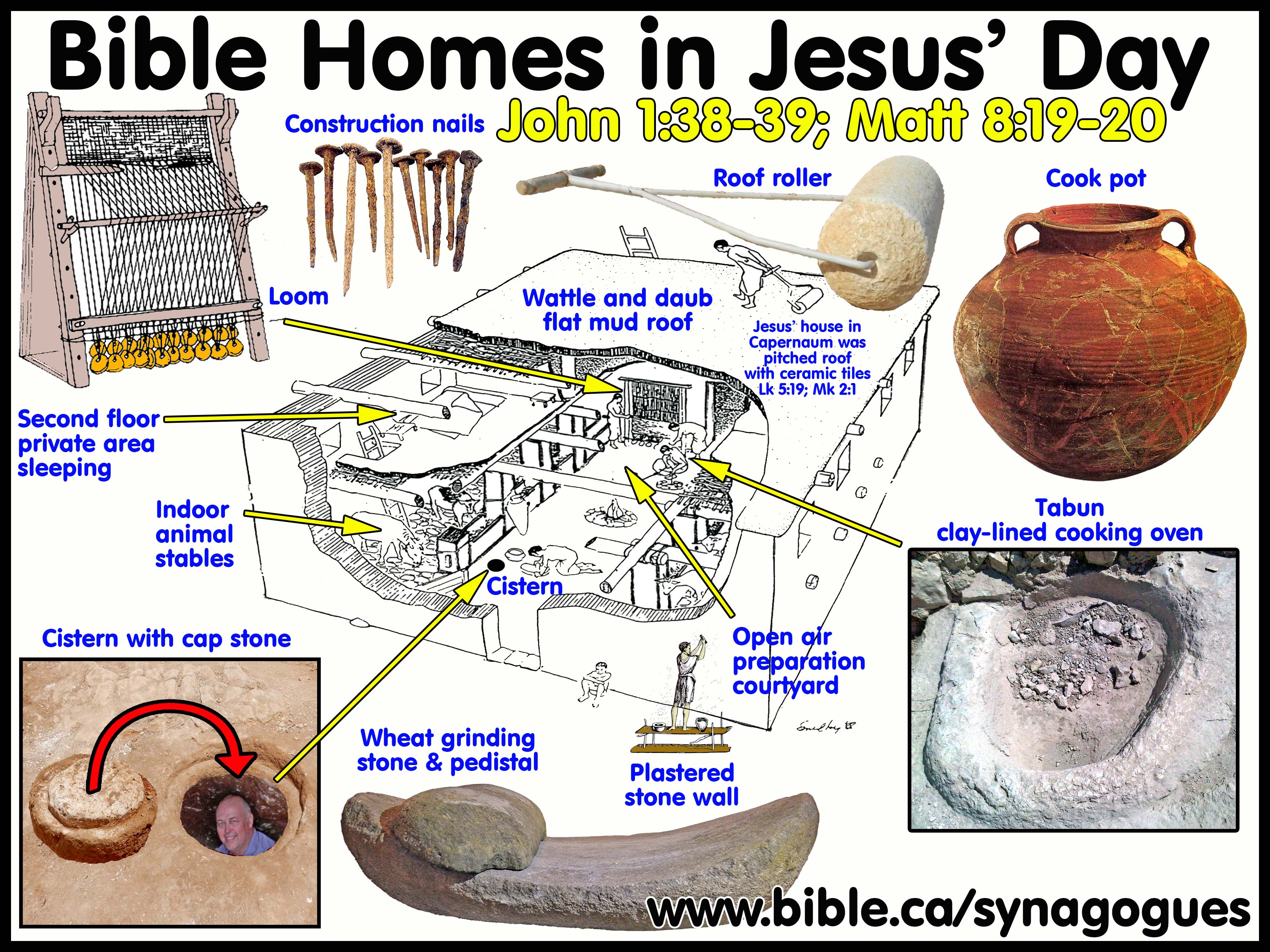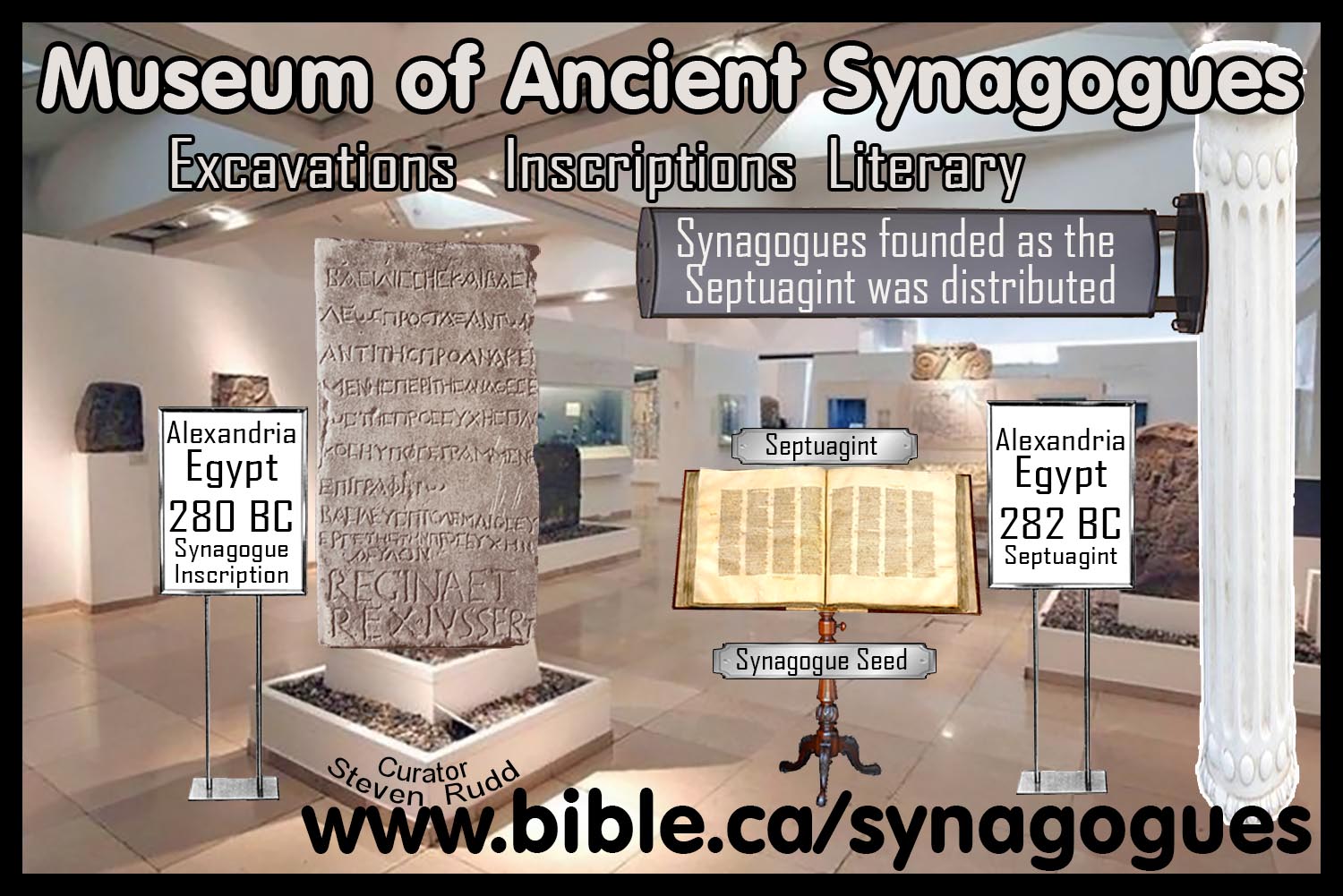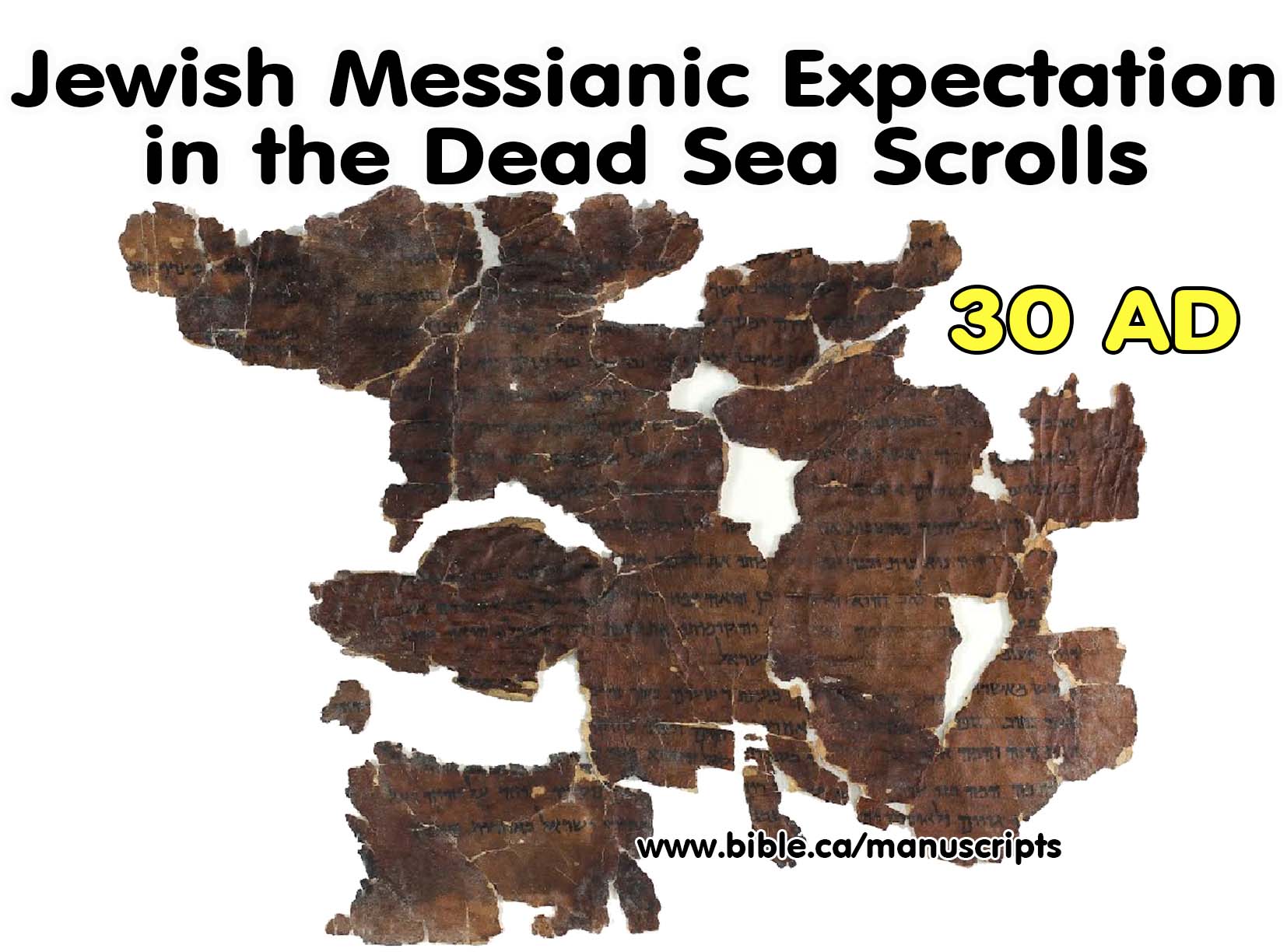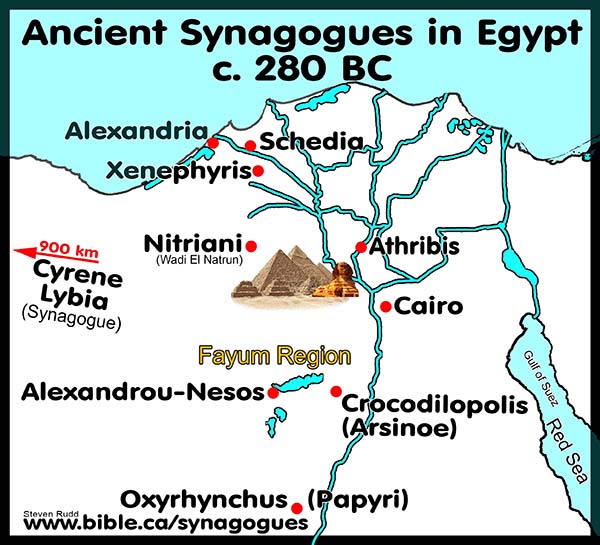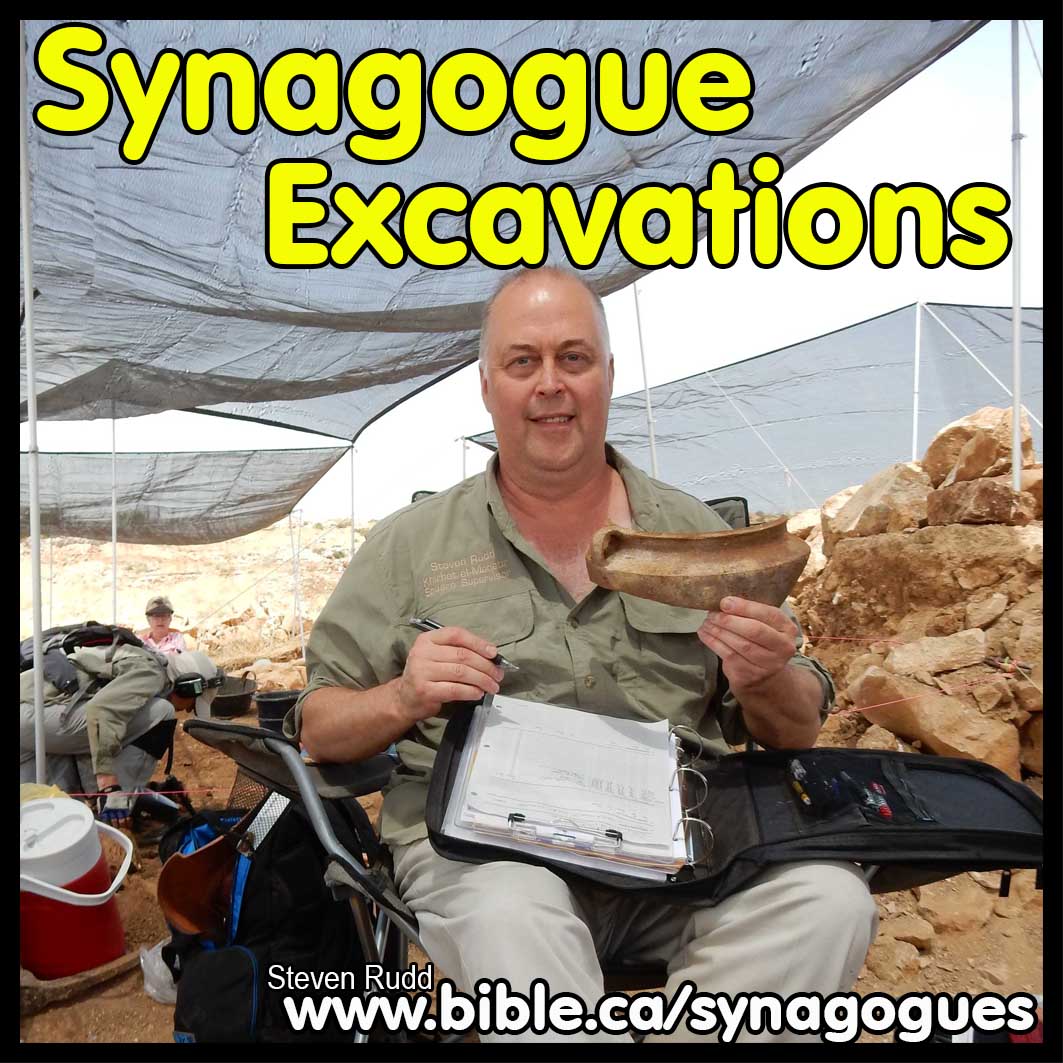Jesus the Master Builder and Creator of universe
Architect, Stonemason, Carpenter of the Temple/church
See also: Archeology of Everyday Life and
Homes at the time of Jesus
See also: THE HOUSE OF
JESUS AT CAPERNAUM
· “You, Lord [Jesus], in the beginning laid the foundation of the earth, And the heavens are the works of Your hands" (Hebrews 1:8–11)
· “I will destroy this temple made with hands, and in three days I will build another made without hands.” (Mark 14:58)
· "Like a wise master builder [archi-tekton] I laid a foundation, and another is building on it. But each man must be careful how he builds on it. For no man can lay a foundation other than the one which is laid, which is Jesus Christ." (1 Corinthians 3:10–11)
· “Is not this the carpenter [Greek: tekton]" (Mark 6:3)
· Jesus is “the founder [archegos] and completer [teleiotes] of our faith.” Heb 12:2
· "you are of God’s household, having been built on the foundation of the apostles and prophets, Christ Jesus Himself being the corner stone, in whom the whole building, being fitted together, is growing into a holy temple in the Lord, in whom you also are being built together into a dwelling of God in the Spirit." (Ephesians 2:19-22)
Introduction:
A. Jesus was much more than a mere carpenter!
1. Jesus was the creator and master builder of the universe, so it should not surprise us that he is described as a “one who constructs” (lit: Tekton)
2. “If Jesus had in fact been a builder of these houses he would have been in very good physical shape. This may help explain how he endured the brutal flagellation before the cross (Matt. 27:26; Mark 15:15; Luke 18:33; John 19:1), an experience that many men did not survive.” (Jesus the Stone Mason?, Brian N. Peterson, Bible and Spade, Vol. 29 No. 1, p23, 2016 AD)
3. Jesus was a Stonemason known in the first century as a “tekton” or “architekton” which included knowledge of carpentry.
4. It is fitting that Jesus is a MASTER BUILDER because tore down the physical temple and rebuilt it HIMSELF in three days as the New Testament church.
B. Jesus the Master builder:
1. Supernaturally, Jesus laid the foundation of the universe: Hebrews 1:8-11
2. Providentially in 1446 BC: Jesus provided the literal water for Israel to drink during the exodus:
3. Secularly, Jesus was an expert at laying foundations who always finished the job!
4. Messianically, Jesus the secular stonemason was the messianic “rejected stone” of Old Testament prophecy:
5. Spiritually, Jesus is the master “architect” stonemason, who laid the foundation of the temple/church and places every Christian/stone in its place in the temple/church wall:
6. Eschatology, Jesus gives us a special smooth stone: "To him who overcomes, to him I will give some of the hidden manna, and I will give him a white stone, and a new name written on the stone [psēphos: polished smooth worn pebble] which no one knows but he who receives it.’" (Revelation 2:17)
7. Unique Facts About Jesus’ House: “When you get the archeology right, the date right, the history right and the geography right, you get the bible story right.”
a. The miracle of the lame man being lowered through the torn up roof was JESUS house where he lived.
b. It was the only house in the bible that had ceramic tiles and pitched roof. Most other houses had flat mud roofs. This may be due to the fact that Jesus was a Master Builder [archi-tekton] and specialized in just this kind of roofing.
c. Jesus and his mother and brothers and sisters moved to Capernaum after the Cana miracle of John 3. It appears that Joseph was dead at this time because he is not mentioned as making the move.
d. It was located in Capernaum not Nazareth.
e. Jesus may have owned or rented this house, or it may have been purchased by Mary after they sold their family house in Nazareth that Joseph, also a builder [tekton], had constructed.
C. Housebuilding and general contracting details in the Bible:
1. The ceramic tile roofed house that Jesus owned or rented: Lk 5:19
2. Cisterns: 2 Kings 18:31; Jeremiah 2:13
3. Lime kilns: Dan 3:22; Jer 23:29
4. Plastered (whitewashed) tombs and walls: Ezekiel 13:10–16; Matthew 23:27; Acts 23:3
5. Nails: 1 Chronicles 22:34; Ecclesiastes 12:11; John 20:25; Colossians 2:14
6. Roofs:
a. Flat Roofs (Wattle and daub) mud and thatch: Deuteronomy 22:8; Daniel 4:29; Mt 7:3
b. Pitched Roofs with ceramic tiles: Lk 5:19
E. Housebuilding and construction allusions in the Bible:
1. Wood Carpenter allusions in the New Testament:
a. "Come to Me, all who are weary and heavy-laden, and I will give you rest. “Take My yoke upon you and learn from Me, for I am gentle and humble in heart, and you will find rest for your souls. “For My yoke is easy and My burden is light.”" (Matthew 11:28–30)
b. "But Jesus said to him, “No one, after putting his hand to the plow and looking back, is fit for the kingdom of God.”" (Luke 9:62)
c. Roofing beams vs. roof dust in the eyes: “dokos” vs. roof dust “karphos”: Mt 7:3-5; Lk 6:41-42 Log vs. spec in eye
2. Stonemason allusions in the New Testament:
a. "like a wise master builder [archi-tekton] I laid a foundation, and another is building on it. But each man must be careful how he builds on it. For no man can lay a foundation other than the one which is laid, which is Jesus Christ." (1 Corinthians 3:10-11)
b. “Everyone who comes to Me and hears My words and acts on them, I will show you whom he is like: he is like a man building a house, who dug deep and laid a foundation [themelion: large foundation stone/megalith] on the rock [petra: bedrock]; and when a flood occurred, the torrent burst against that house and could not shake it, because it had been well built. “But the one who has heard and has not acted accordingly, is like a man who built a house on the ground without any foundation [themelion: large foundation stone/megalith]; and the torrent burst against it and immediately it collapsed, and the ruin of that house was great.” (Luke 6:47-49)
c. Lk 6 “without foundation” = Mt 7:26 “on the sand”: "Everyone who hears these words of Mine and does not act on them, will be like a foolish man who built his house on the sand." (Matthew 7:26)
d. As a contractor, Jesus was aware of many stories of others who laid foundations but were unable to complete: "For which one of you, when he wants to build a tower, does not first sit down and calculate the cost to see if he has enough to complete it? “Otherwise, when he has laid a foundation [themelion] and is not able to finish, all who observe it begin to ridicule him, saying, ‘This man began to build and was not able to finish.’" (Luke 14:28–30)
e. "This precious value, then, is for you who believe; but for those who disbelieve, “The stone which the builders rejected, This became the very corner stone [akrogōniaios: corner stone],” and, “A stone [Lithos: wall stone] of stumbling and a rock [petra: bedrock] of offense”; for they stumble because they are disobedient to the word, and to this doom they were also appointed." (1 Peter 2:7-8)
f. "I also say to you that you are Peter, and upon this rock [petra: bedrock] I will build My church; and the gates of Hades will not overpower it." (Matthew 16:18)
g. "So then you are no longer strangers and aliens, but you are fellow citizens with the saints, and are of God’s household, having been built on the foundation [themelion: large foundation stone] of the apostles and prophets, Christ Jesus Himself being the corner stone [akrogōniaios: corner stone], in whom the whole building, being fitted together [Lithos: wall stone, not in Greek but implied], is growing into a holy temple in the Lord, in whom you also are being built together into a dwelling of God in the Spirit." (Ephesians 2:19-22)
h. "For we are God’s fellow workers; you are God’s field, God’s building. According to the grace of God which was given to me, like a wise master builder [archi-tekton] I laid a foundation [themelion: large foundation stone], and another is building on it. But each man must be careful how he builds on it. For no man can lay a foundation [themelion: large foundation stone] other than the one which is laid, which is Jesus Christ. Now if any man builds on the foundation [themelion: large foundation stone] with gold, silver, precious stones [Lithos: wall stone], wood, hay, straw, each man’s work will become evident; for the day will show it because it is to be revealed with fire, and the fire itself will test the quality of each man’s work. If any man’s work which he has built on it remains, he will receive a reward. If any man’s work is burned up, he will suffer loss; but he himself will be saved, yet so as through fire." (1 Corinthians 3:9–15)
i. "And thus I aspired to preach the gospel, not where Christ was already named, so that I would not build on another man’s foundation [themelion: large foundation stone]" (Romans 15:20)
j. "After you have suffered for a little while, the God of all grace, who called you to His eternal glory in Christ, will Himself perfect, confirm, strengthen and establish [themelion: large foundation stone/megalith] you." (1 Peter 5:10)
I. Jesus the Master Builder: Architect (Stonemason and Carpenter)
A. Jesus is explicitly called a “builder”: Tekton = “one who constructs”
1. Two bible passages describe Jesus and his father Joseph as a builder (tekton):
a. Joseph was a “Tekton": “Is not this the carpenter’s [Greek: tekton] son? Is not His mother called Mary, and His brothers, James and Joseph and Simon and Judas?" (Matthew 13:55)
b. "“Is not this the carpenter [Greek: tekton], the son of Mary, and brother of James and Joses and Judas and Simon? Are not His sisters here with us?” And they took offense at Him." (Mark 6:3)
2. The English word translated CARPENTER in the Bible is from the Greek word TEKTON
a. Tekton is only used twice in the New Testament and is a generic word that means “constructor”.
b. We get our English words “technician” and “technical” from the Greek word Tekton.
c. The Greek alone gives no specific indication if Jesus was a builder of stone or wood.
3. The Greek Septuagint Old Testament uses the word TEKTON for both carpenters and stonemasons:
a. "And Hiram king of Tyre sent messengers to David and cedar wood and craftsman [Greek: tekton] of wood [Greek: xylon] and craftsman [Greek: tekton] of stone [lithos] and they built a house for David." (2 Kingdoms 5:11, LXX)
b. Tekton, therefore is a generic word for “one who constructs” or a builder.
c. “In the LXX a number of terms are used for craftsmen (carpenters included). In 2 Sm. 5:11 stone masons and carpenters are both labeled tekton but are distinguished by the word that follows tekton. For a carpenter “wood” (zulon) follows tekton and for the stone mason “stone” (lithos) follows it. Hence we have builders with wood, and builders with stone. This is very similar to the appearances of tekton in 2 Kgs. 2:12 and 1 Chron. 14:1. In both cases the word “wood” (zulon) follows tekton to clarify the type of tekton meant. This is also true in Isa. 44:13 where Isaiah is clearly speaking about a skilled craftsman in wood. Here he uses both tekton and zulon together. When the word “mason” is not accompanied by the term “carpenter” in English translations of the OT it is most frequently paired with “stone cutter” and translated from the words teichistes or latomos. These two terms are used somewhat interchangeably (cf. 2 Kgs. 12:12; 2 Chron. 22:2 cf. 2 Kgs. 22:6). In these situations a “stone mason” is clearly someone who works exclusively with quarrying and/or dressing stones for urban construction projects, not the building of rural houses with field stones. This conclusion is further bolstered by the texts of 2 Chron. 24:12 and Ezra 3:7. In these texts, “mason” is translated from latomos which again means “a stone-cutter” in the contexts. Further, in both verses tekton also appears. The KJV and the NASB translate tekton in both cases as carpenter; however because no clarifying word appears (i.e., zulon), a craftsman in general may be the best rendering as attested in the Jewish Tanach. This rendering is reinforced by the way the NASB translates tekton (with no clarifiers) in Zech. 2:3 as “craftsmen.” Finally, while the KJV translates technites as “carpenter” in Jer. 24:1 and 29:2, this term is actually a synonym for “craftsmen” as well, and is duly rendered as such by the NASB translators. We may summarize our above survey by concluding that tekton without the qualifying term for “wood” (zulon) has the general meaning of “craftsman” in the OT (cf. NASB Isa. 41:7). When tekton and zulon appear together, then a carpenter is clearly to be understood. If we follow this understanding from the OT Greek usage now to the New Testament, we will find that when Jesus is called a tekton, the word zulon (“wood”) does not follow. Therefore, Jesus must have been a craftsman/builder in general (stones included). There is no clear connection to him being a “woodworker” per se!” (Jesus the Stone Mason?, Brian N. Peterson, Bible and Spade, Vol. 29 No. 1, p22, 2016 AD)
4. The bible indicates that Jesus’ secular job as a “tekton” primarily involved laying foundations of buildings as a “stonemason”.
a. "Like a wise master builder [archi-tekton] I laid a foundation, and another is building on it. But each man must be careful how he builds on it. For no man can lay a foundation other than the one which is laid, which is Jesus Christ." (1 Corinthians 3:10–11)
b. Jesus was the “archi-tekton” who laid himself as the foundation of the church.
c. Notice “tekton” is only used twice in scripture of Jesus and his father mistranslated “carpenter”.
d. Notice “archi-tekton” is only used once in scripture and it involves LAYING FOUNDATION STONES as a STONE mason not a WOOD carpenter.
5. Jesus secular job was a master stone mason (architect: “archi-tekton) who first laid the foundations of houses, then built the walls and roof until completed!
B Stonemason allusions and imagery used by Jesus “the master builder” [tekton] in the Bible:
1. Jesus understood the exact method of laying a foundation and used the exact terminology as an experienced stonemason.
2. Dig foundation to bedrock: Notice in Lk 6:48 Jesus specifically speaks of DIGGING DEEP down to bedrock [petra: bedrock]
a. "And Joseph took the body and wrapped it in a clean linen cloth, and laid it in his own new tomb, which he had hewn out in the rock [petra: bedrock]; and he rolled a large stone [Lithos: wall stone] against the entrance of the tomb and went away." (Matthew 27:59–60)
3. Lay the corner stone: akrogōniaios: corner stone
4. Laying the megalith foundation stones to form perimeter of building: themelion: large foundation stone/megalith
5. Build the walls with smaller stones: Lithos: wall stone.
a. "And He withdrew from them about a stone’s [Lithos: wall stone] throw, and He knelt down and began to pray," (Luke 22:41)
b. "The Jews picked up stones [Lithos: wall stone] again to stone Him." (John 10:31)
C. Jesus is the spiritual founder [foundation] and completer of our faith: Heb 12:2 “the founder [archegos] and completer [teleiotes] of our faith.”
1. Supernaturally, Jesus laid the foundation of the universe: Hebrews 1:8-11
a. "All things came into being through Him, and apart from Him nothing came into being that has come into being." (John 1:3)
b. "He was in the world, and the world was made through Him, and the world did not know Him." (John 1:10)
c. "yet for us there is but one God, the Father, from whom are all things and we exist for Him; and one Lord, Jesus Christ, by whom are all things, and we exist through Him." (1 Corinthians 8:6)
d. "For by Him all things were created, both in the heavens and on earth, visible and invisible, whether thrones or dominions or rulers or authorities—all things have been created through Him and for Him." (Colossians 1:16)
e. "in these last days has spoken to us in His Son, whom He appointed heir of all things, through whom also He made the world." (Hebrews 1:2)
f. "But of the Son He says, “Your throne, O God, is forever and ever, And the righteous scepter is the scepter of His kingdom. “You have loved righteousness and hated lawlessness; Therefore God, Your God, has anointed You With the oil of gladness above Your companions.” And, “You, Lord, in the beginning laid the foundation of the earth, And the heavens are the works of Your hands; They will perish, but You remain; And they all will become old like a garment" (Hebrews 1:8–11)
2. Providentially in 1446 BC: Jesus provided the literal water for Israel to drink during the exodus:
a. Twice God gave Israel water to drink through Moses: At Sinai (11 months) and Kadesh Barnea (38 years)
b. "and all drank the same spiritual drink, for they were drinking from a spiritual rock [petra: bedrock] which followed them; and the rock [petra: bedrock] was Christ." (1 Corinthians 10:4)
3. Secularly, Jesus was an expert at laying foundations who always finished the job!
a. “Everyone who comes to Me and hears My words and acts on them, I will show you whom he is like: he is like a man building a house, who dug deep and laid a foundation [themelion: large foundation stone/megalith] on the rock [petra: bedrock]; and when a flood occurred, the torrent burst against that house and could not shake it, because it had been well built. “But the one who has heard and has not acted accordingly, is like a man who built a house on the ground without any foundation [themelion: large foundation stone/megalith]; and the torrent burst against it and immediately it collapsed, and the ruin of that house was great.” (Luke 6:47-49)
b. Lk 6 “without foundation” = Mt 7:26 “on the sand”: "Everyone who hears these words of Mine and does not act on them, will be like a foolish man who built his house on the sand." (Matthew 7:26)
c. As a contractor, Jesus was aware of many stories of others who laid foundations but were unable to complete: "For which one of you, when he wants to build a tower, does not first sit down and calculate the cost to see if he has enough to complete it? “Otherwise, when he has laid a foundation [themelion] and is not able to finish, all who observe it begin to ridicule him, saying, ‘This man began to build and was not able to finish.’" (Luke 14:28–30)
d. Remember, Jesus not only dug the foundation as a stonemason, but also completing the job by building stone walls and wooden roof trusses as a wood carpenter.
4. Messianically, Jesus the secular stonemason was the messianic “rejected stone” of Old Testament prophecy:
a. Daniels visions of five kingdoms traces the path of God’s grace from Mosaic Judaism to Christianity: Babylon, Persia, Greece, Rome, the Church: "In the days of those kings the God of heaven will set up a kingdom which will never be destroyed, and that kingdom will not be left for another people; it will crush and put an end to all these kingdoms, but it will itself endure forever. “Inasmuch as you saw that a stone [Lithos: wall stone] (Jesus Christ) was cut out of the mountain without hands and that it crushed the iron, the bronze, the clay, the silver and the gold, the great God has made known to the king what will take place in the future; so the dream is true and its interpretation is trustworthy.”" (Daniel 2:44–45)
b. "Jesus said to them, “Did you never read in the Scriptures, ‘The stone [Lithos: wall stone] which the builders rejected, This became the chief corner stone [akrogōniaios: corner stone]; This came about from the Lord, And it is marvelous in our eyes’? “Therefore I say to you, the kingdom of God will be taken away from you and given to a people, producing the fruit of it. “And he who falls on this stone [Lithos: wall stone] will be broken to pieces; but on whomever it falls, it will scatter him like dust.” When the chief priests and the Pharisees heard His parables, they understood that He was speaking about them." (Matthew 21:42–45)
c. Jesus when He laid foundations as a stonemason (tekton), would have rejected many stones as the cornerstone. The irony is that the Jews rejected what they thought was a worthless small rock [lithos] which in fact WAS the very bedrock [petra: bedrock] and cornerstone [akrogōniaios: corner stone].
d. "The stone [Lithos: wall stone] which the builders rejected Has become the chief corner stone [akrogōniaios: corner stone]." (Psalm 118:22, LXX)
e. "let it be known to all of you and to all the people of Israel, that by the name of Jesus Christ the Nazarene, whom you crucified, whom God raised from the dead—by this name this man stands here before you in good health. “He is the stone [Lithos: wall stone] which was rejected by you, the builders, but which became the chief corner stone [akrogōniaios: corner stone]. “And there is salvation in no one else; for there is no other name under heaven that has been given among men by which we must be saved.”" (Acts 4:10–12)
f. "This precious value, then, is for you who believe; but for those who disbelieve, “The stone which the builders rejected, This became the very corner stone [akrogōniaios: corner stone],” and, “A stone [Lithos: wall stone] of stumbling and a rock [petra: bedrock] of offense”; for they stumble because they are disobedient to the word, and to this doom they were also appointed." (1 Peter 2:7-8)
g. "but Israel, pursuing a law of righteousness, did not arrive at that law. Why? Because they did not pursue it by faith, but as though it were by works. They stumbled over the stumbling stone [Lithos: wall stone], just as it is written, “Behold, I lay in Zion a stone [Lithos: wall stone] of stumbling and a rock [petra: bedrock] of offense, And he who believes in Him will not be disappointed.”" (Romans 9:31–33)
5. Spiritually, Jesus is the master “architect” stonemason, who laid the foundation of the temple/church and places every Christian/stone in its place in the temple/church wall:
a. "I also say to you that you are Peter, and upon this rock [petra: bedrock] I will build My church; and the gates of Hades will not overpower it." (Matthew 16:18)
b. "So then you are no longer strangers and aliens, but you are fellow citizens with the saints, and are of God’s household, having been built on the foundation [themelion: large foundation stone] of the apostles and prophets, Christ Jesus Himself being the corner stone [akrogōniaios: corner stone], in whom the whole building, being fitted together [Lithos: wall stone, not in Greek but implied], is growing into a holy temple in the Lord, in whom you also are being built together into a dwelling of God in the Spirit." (Ephesians 2:19-22)
c. "For we are God’s fellow workers; you are God’s field, God’s building. According to the grace of God which was given to me, like a wise master builder [archi-tekton] I laid a foundation [themelion: large foundation stone], and another is building on it. But each man must be careful how he builds on it. For no man can lay a foundation [themelion: large foundation stone] other than the one which is laid, which is Jesus Christ. Now if any man builds on the foundation [themelion: large foundation stone] with gold, silver, precious stones [Lithos: wall stone], wood, hay, straw, each man’s work will become evident; for the day will show it because it is to be revealed with fire, and the fire itself will test the quality of each man’s work. If any man’s work which he has built on it remains, he will receive a reward. If any man’s work is burned up, he will suffer loss; but he himself will be saved, yet so as through fire." (1 Corinthians 3:9–15)
d. "And thus I aspired to preach the gospel, not where Christ was already named, so that I would not build on another man’s foundation [themelion: large foundation stone]" (Romans 15:20)
c. "After you have suffered for a little while, the God of all grace, who called you to His eternal glory in Christ, will Himself perfect, confirm, strengthen and establish [themelion: large foundation stone/megalith] you." (1 Peter 5:10)
6. Eschatology, Jesus gives us a special smooth stone: "To him who overcomes, to him I will give some of the hidden manna, and I will give him a white stone, and a new name written on the stone [psēphos: polished smooth worn pebble] which no one knows but he who receives it.’" (Revelation 2:17)
a. Ancient juries acquitted with white stones and convicted with black stones: “When judgement should bee given it was the guyse in auncient tyme With whyght stones to acquit the cleere, and eeke with blacke to cast The giltye. That tyme also so the heavy sentence past. The stones were cast unmercifull all blacke into the pot. But when the stones were powred out to number, there was not A blacke among them. All were whyght. And so through Hercles powre A gentle judgement did proceede, and he was quit that howre. Then gave he thankes to Hercules, and having prosprous blast, Cut over the Ionian sea, and so by Tarent past” (Metamorphosis, P. Ovidius Naso 15.48–56, 1567 AD)
b. “New” is used of a future age, “Behold I make all things new” (Rev 21:5), always in pairs:
i. Our new name: Rev 2:17; Christ’s new name: Rev 3:12
ii. New song: Rev 5:9; 14:3
iii. New Jerusalem” Rev 3:12; 21:2
c. Naming rights show lordship over the person named:
iv. Adam named the animals and was like “god” over them on earth.
v. Adam named Eve and this became one of 8 reasons she submitted to him.
vi. Nebuchadnezzar renamed the last 3 kings of Judah and the deportees who went to Babylon: Daniel, Hananiah, Mishael and Azariah were all given pagan Babylonian names after the God’s Bel and Nebu.
vii. Jesus often gave new names to his disciples: Simon was renamed Cephas/Peter = rock. James and John he named them Boanerges = Sons of Thunder)
D. Wood Carpenter allusions and imagery used by Jesus “the builder” [tekton] in the bible:
1. 150 BC: Justin Martyr: “When Jesus came to the Jordan, therefore, being considered the son of Joseph the carpenter, and having no comeliness, as the Scriptures affirmed, He was thought to be a carpenter (for, when He was on earth He used to work as a carpenter, making ploughs and yokes, and thereby giving us symbolic lessons of the necessity of leading a just and active life)” (Justin, Dialogue 88)
a. Justin calls Jesus a wood carpenter who built ploughs and yokes, both of which are needed for plowing soil in preparation for sewing the seed.
2. If Jesus manufactured wooden yokes and plows for oxen in tilling the ground in preparation for planting seed, he was a first hand expert in these areas.
a. Jesus understood first hand how to carve yoke to the perfect dimensions to ensure the two oxen work optimally together as one force.
b. Jesus was an expert in getting oxen to plow strait furrows since he needed to understand the exact angle and pitch of the plow blade.
c. Jesus understood directly that throwing seed on plowed ground would yield a higher crop output than sewing the seed on hard unplowed ground where the birds would easily eat the seed.
3. It was very powerful for Him to say, “Take my yoke upon you” as a spiritual metaphor while holding an actual wooden yoke he made and sold for oxen.
a. "Come to Me, all who are weary and heavy-laden, and I will give you rest. “Take My yoke upon you and learn from Me, for I am gentle and humble in heart, and you will find rest for your souls. “For My yoke is easy and My burden is light.”" (Matthew 11:28–30)
4. Jesus was an expert in how to make a plow turn strait furrows:
a. "But Jesus said to him, “No one, after putting his hand to the plow and looking back, is fit for the kingdom of God.”" (Luke 9:62)
b. If you look back
while plowing you create a crooked zag in the furrow.
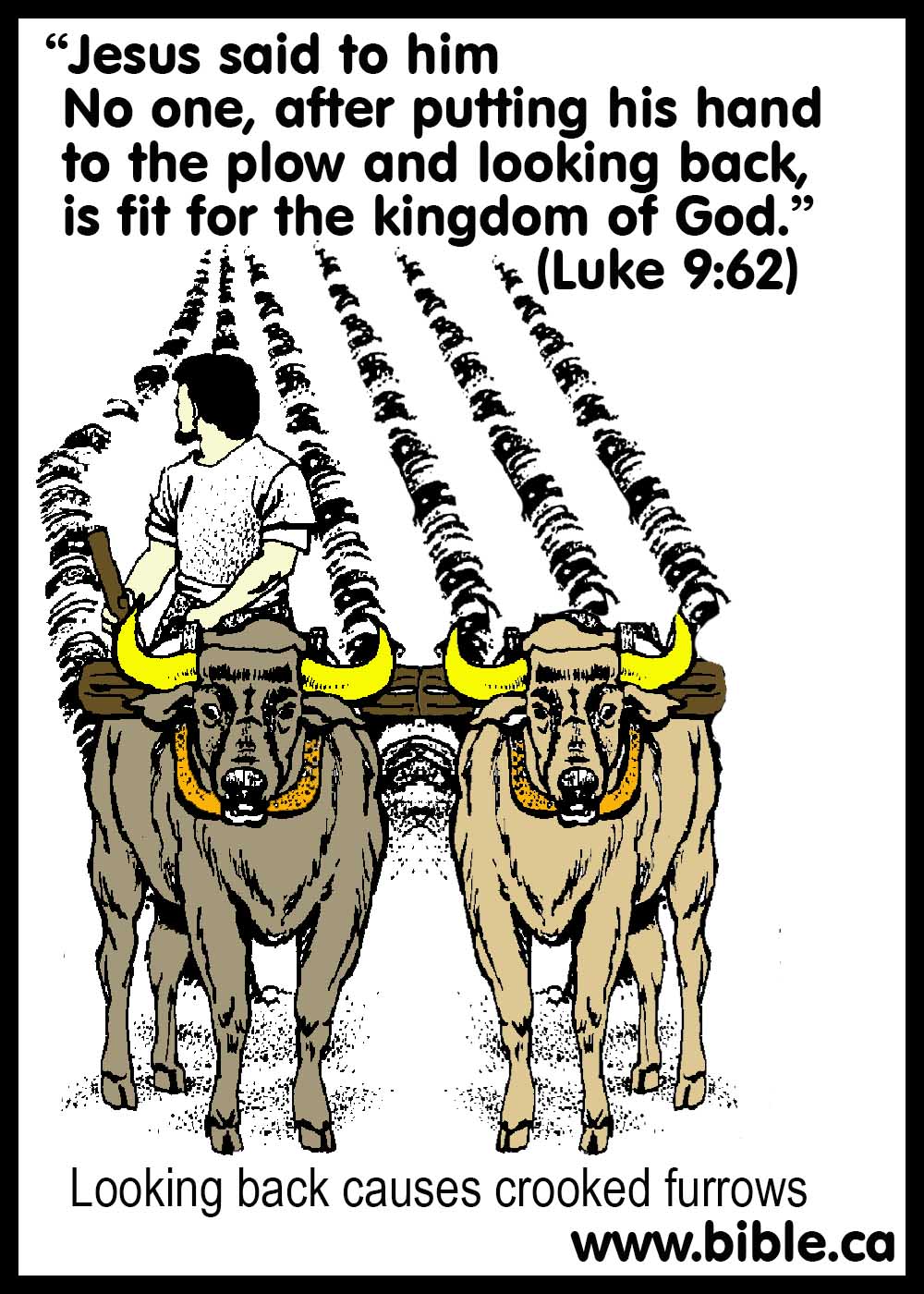
5. Roofing beams vs. roof dust in the eyes: “dokos” vs. roof dust “karphos”: Mt 7:3-5; Lk 6:41-42
a. Jesus would be very familiar as a master workman stone mason (who would also know the carpentry trade) about the roof beams needed to build a house.
b. Everyone living under flat roofs would have frequently experienced little bits of dried roof thatch falling in their eyes while living indoors.
c. Getting roof dust in your eyes was familiar and sometimes required the assistance of others to remove it.
d. “And why do you look at the speck [Greek: karphos, ie sawdust] that is in your brother’s eye, but do not notice the log [Greek: dokos] that is in your own eye? “Or how can you say to your brother, ‘Let me take the speck out of your eye,’ and behold, the log [Greek: dokos] is in your own eye? “You hypocrite, first take the log [Greek: dokos] out of your own eye, and then you will see clearly to take the speck out of your brother’s eye.” (Mt 7:3-5; Lk 6:41-42)
E. Jesus as a first century “architect” equivalent to a “general contractor” today: 1 Corinthians 3:10-11
1. "like a wise master builder [archi-tekton] I laid a foundation, and another is building on it. But each man must be careful how he builds on it. For no man can lay a foundation other than the one which is laid, which is Jesus Christ." (1 Corinthians 3:10-11)
a. “In the Jewish sources, the mason is accordingly considered to be an expert craftsman in the building trade." In addition to their role in construction, masons were also employed for the systematic dismantling of structures." In fact, the various technical terms used in rabbinic literature to describe the professional builder indicate the wide range of activities included in the craft, from stone-dressing to planning to architectural decoration. Sometimes the mason was referred to by the general term "craftsman" and sometimes "architect". More rarely, the Greek term architekton was used." (The Palestinian Dwelling in the Roman to Byzantine Period, Yizhar Hirschfeld, p227, 1995 AD)
b. “Although the dwelling, is not discussed as a separate subject in the Jewish sources, many legal discussions in the Halakha and traditions in the Midrash contain important details pertaining to the structure of the house. It is clear from these sources that many terms connected with house construction are derived. from Greek and Latin terminology. Some of these terms describe specific parts of the house, such as kiton (bedroom), traklin (entertaining room), and exedra. Other terms relate to technical aspects of house construction, such as dimos (course), diatona (tie stone), and architekton (mason). Such penetration of terminology provides evidence for the influence of Greek and Roman traditions and practices on the architecture of the dwelling in Palestine. This influence, however, seems to have been limited to the more technological aspects of house construction, while the general plan and utilization of domestic space remained bound to local custom.” (The Palestinian Dwelling in the Roman to Byzantine Period, Yizhar Hirschfeld, p292, 1995 AD)
2. In first century terminology “tekton” was equivalent to a stonemason who built entire houses with both stone and wood. Therefore, when Jesus functioned as a “carpenter” (as tradition suggests), this was in reality a subtrade to his primary function as a stonemason. Jesus built (tekton) houses of stone and wood. Jesus was a general contractor able to build entire structures with both stone and wood, since both are needed in any first century building.
a. “But while they were in this disposition, the king encouraged them, and told them he would not pull down their temple till all things were gotten ready for building it up entirely again. And as he promised them this beforehand, so he did not break his word with them, (390) but got ready a thousand wagons, that were to bring stones for the building [Tekton], and chose out ten thousand of the most skilful workmen, and bought a thousand sacerdotal garments for as many of the priests, and had some of them taught the arts of stone cutters, and others of carpenters, and then began to build; but this not till everything was well prepared for the work. So Herod took away the old foundations, and laid others, and erected the temple upon them, being in length a hundred cubits, and in height twenty additional cubits, which [twenty], upon the sinking of their foundations, fell down: and this part it was that we resolved to raise again in the days of Nero. Now the temple was built of stones that were white and strong, and each of their length was twenty-five cubits, their height was eight, and their breadth about twelve” (Josephus, Antiquities 15.389-392)
II The ceramic tile roofed house that Jesus owned or rented:
A. Jesus and his father were builders of houses.
1. The Bible says that both Jesus and his father were “constructors/builders” (tekton).
2. Joseph would have surely built a house for his wife Mary and their many children
3. Jesus may have lived in the house of his parents until he was 30 like many millennials are doing today!!!
4. Jesus had a full time job as a “master builder” and was known as such in his home town of Nazareth.
5. Or Jesus may have moved out and built his own house.
6. If Jesus owned a house of his own, it was likely that he sold it when he began his ministry.
B. The house the Magi visited when Jesus was born was in Bethlehem not Nazareth:
1. Jesus was born in the main floor stable of a house, not a pubic in. There was no room for Mary on the second floor, “hueroon, kataluma”.
2. "After coming into the house they saw the Child with Mary His mother; and they fell to the ground and worshiped Him. Then, opening their treasures, they presented to Him gifts of gold, frankincense, and myrrh." (Matthew 2:11)
3. This was a temporary residence until Joseph fled to Egypt.
4. Only after the return from Egypt to Nazareth a year later would Joseph possibly begin building a stone house for the family.
C. Jesus “family house” in Capernaum with the pitched ceramic tile roof at the beginning of his ministry:
1. Jesus home base was at Capernaum at the beginning of his ministry:
a. "This beginning of His signs Jesus did in Cana of Galilee, and manifested His glory, and His disciples believed in Him. After this He went down to Capernaum, He and His mother and His brothers and His disciples; and they stayed there a few days." (John 2:11-12)
b. "Now when Jesus heard that John had been taken into custody, He withdrew into Galilee; and leaving Nazareth, He came and settled in Capernaum, which is by the sea, in the region of Zebulun and Naphtali." (Matthew 4:12–13)
c. "When He had come back to Capernaum several days afterward, it was heard that He was at home. And many were gathered together, so that there was no longer room, not even near the door; and He was speaking the word to them. And they came, bringing to Him a paralytic, carried by four men. Being unable to get to Him because of the crowd, they removed the roof above Him; and when they had dug an opening, they let down the pallet on which the paralytic was lying." (Mark 2:1–4)
d. "But not finding any way to bring him in because of the crowd, they went up on the roof and let him down through the tiles with his stretcher, into the middle of the crowd, in front of Jesus." (Luke 5:19)
2. Pitched ceramic tile roofs in 30 AD:
a. The prevailing [wrong] view among archeologists, is that ceramic tile roofs were not used in Judea during the first century. They say fired clay tile were not used for roofing until the byzantine period.
b. The problem is that the bible EXPLICITLY says that Jesus’ house had fired clay ceramic tiles.
c.
The author has personally excavated hundreds of fragments of Byzantine
clay tiles at Khirbet el-Maqatir in the monastery that dates to 375 AD. Here
are some of those actual samples acquired through excavation:

3. The roof of Jesus’ house in Luke 5:19 was made of “keramos” (Ceramic) is used of fired pottery either pottery or roofing tiles:
a. "But not finding any way to bring him in because of the crowd, they went up on the roof and let him down through the tiles [Greek: keramos] with his stretcher, into the middle of the crowd, in front of Jesus." (Luke 5:19)
b. We get our word “ceramic” from the Greek word “Keramos”.
c. The Greek word “keramos” never means raw clay or earth, as was used in flat roofs.
d. The Greek word
“keramos” always means fired pottery or and is the specific Greek word for
ceramic roofing tiles.

4. The Greek word “keramos” used in Luke 5:19 can mean “ceramic fired pottery”:
a. "brought ten beds and rugs and ten caldrons and jars of clay [Greek: keramos] and wheat and barley and meal and grain and beans and lentils" (2 Kingdoms 17:28, LXX)
b. 760 BC: “many a jar [Greek: keramos], too, did they broach of my father’s wine” (Homer, Iliad 9.469)
c. 450 BC: “The tribute is stored by the king in this fashion: he melts it down and pours it into earthen vessels; when the vessel is full he breaks the earthenware [Greek: keramos] away, and when he needs money coins as much as serves his purpose.” (Herodotus, Hist. 3.96.2)
d. 150 AD: “The size of the beast was about a hundred feet and its head seemed to be of earthenware. [Greek: keramos]” (Shepherd of Hermas, Vis. IV, i, 6)
e. 150 AD: “A drop of fluid falling from a jug [Greek: keramos] onto the ground bores through a stone.” (Shepherd of Hermas, Man. XI, 20)
5. The Greek word “keramos” used in Luke 5:19 is the exact word used to describe “ceramic fired roof tiles”:
a. 272 BC: “When the fighting was now taking place by sanctuaries and houses, and in the narrow lanes, between detached bodies in different parts of the town, Pyrrhus left by himself was wounded in the head. It is said that his death (272 BC) was caused by a blow from a tile [Greek: keramos] thrown by a woman. The Argives however declare that it was not a woman who killed him but Demeter in the likeness of a woman.” (Pausanias, Gr. Descr. 1.13.8, 180 AD)
b. 450 BC: “Now when the followers of Stasippus perceived what was going on, they rushed out by the gates leading to Pallantium, gained refuge in the temple of Artemis before they could be overtaken by their pursuers, and after shutting themselves in, remained quiet there. But their foes who had followed after them climbed upon the temple, broke through the roof, and pelted them with the tiles [Greek: keramos]. And when the people within realized the hopelessness of their situation, they bade them stop and said they would come out.” (Xenophon, Hellenica, 6.5.9)
c. 250 BC: “But, if we scold even that much, the doorstep doesn’t see him for three days, or he sponges on his grandmother — an indigent old woman — or he climbs on the roof and sits there with his feet dangling, like an ape, looking down. And I, unhappy one, who know what I suffer in my entrails when I see him up there! Not so much for him, because he rips off the tiles [Greek: keramos] like leaves. And, when winter comes, in tears I have to pay three half-oboli for each tile [Greek: keramos], while everybody cries: “That is the work of Kottalos, Metrotima’s boy!” And, being true, I can’t stir a tooth in answer.” (Mimes Of Herondas, 3:44)
d. 400 BC: “ἀφύας ἄρʼ ἄξεις πριάμενος Φαληρικὰς ἢ κέραμον [Greek: keramos]” (Aristophanes, Acharnians 901-902)
e. 400 BC: “But at last, when both the Plataeans themselves charged them with a
great clamour, and their wives also and families shouted and screeched from the
houses [ie. Rooftops] and withal threw stones and [ie roofing] tiles [Greek:
keramos] amongst them” (Thucydides, Hist. 2.4.2)

D. Evidence that Jesus did not own a house during his later ministry:
1. Jesus stayed in his own place during the ministry of John near Bethany beyond the Jordan:
a. Jesus may have rented this place for a short time, while keeping his house at Capernaum.
b. Jesus was living very near the place where John the Baptist was working at Bethany beyond the Jordan.
c. Bethany beyond the Jordan was 20 north-east of Jerusalem, 8 km east of Jericho and on the east side of the Jordan river.
d. "And Jesus turned and saw them following, and said to them, “What do you seek?” They said to Him, “Rabbi (which translated means Teacher), where are You staying?” He said to them, “Come, and you will see.” So they came and saw where He was staying; and they stayed with Him that day, for it was about the tenth hour." (John 1:38–39)
2. Jesus indicated that he had no fixed address: Matthew 8:19-20
a. "Then a scribe came and said to Him, “Teacher, I will follow You wherever You go.” Jesus said to him, “The foxes have holes and the birds of the air have nests, but the Son of Man has nowhere to lay His head.”" (Matthew 8:19–20)
b. The point of Jesus statement to this man (who thought following Jesus would bring him material wealth) is that following him was not a road paved with gold. Jesus did not even own a house. This probably surprised the man. Jesus likely read his heart seeking personal financial wealth, which explains the statement. “Look, if you follow me, don’t expect to get rich… I don’t even own a house!”
3. Jesus instructed his disciples to be itinerate and nomadic following His own example:
a. "Do not acquire gold, or silver, or copper for your money belts, or a bag for your journey, or even two coats, or sandals, or a staff; for the worker is worthy of his support. “And whatever city or village you enter, inquire who is worthy in it, and stay at his house until you leave that city. “As you enter the house, give it your greeting. “If the house is worthy, give it your blessing of peace. But if it is not worthy, take back your blessing of peace. “Whoever does not receive you, nor heed your words, as you go out of that house or that city, shake the dust off your feet. “Truly I say to you, it will be more tolerable for the land of Sodom and Gomorrah in the day of judgment than for that city." (Matthew 10:9–15)
b. "“Whatever house you enter, first say, ‘Peace be to this house.’ “If a man of peace is there, your peace will rest on him; but if not, it will return to you. “Stay in that house, eating and drinking what they give you; for the laborer is worthy of his wages. Do not keep moving from house to house. “Whatever city you enter and they receive you, eat what is set before you;" (Luke 10:5–8)
c. This was a pattern for the twelve and the 70 to follow.
4. Jesus owned/rented a house in Capernaum, but this banquet was hosted by Matthew the tax collector and other sinners in Matthew’s house:
a. Mt 9:10 and Mk 2:15 are misused as proof texts that Jesus owned a house.
b. "As Jesus went on from there, He saw a man called Matthew, sitting in the tax collector’s booth; and He said to him, “Follow Me!” And he got up and followed Him. Then it happened that as Jesus was reclining at the table in the house, behold, many tax collectors and sinners came and were dining with Jesus and His disciples." (Matthew 9:9–10)
c. "And Levi gave a big reception for Him in his house; and there was a great crowd of tax collectors and other people who were reclining at the table with them." (Luke 5:29)
d. So the banquet was hosted in Matthew’s house.
5. The beautiful conversion story of Zaccheus the tax collector show that Jesus was itinerate just like he instructed his followers.
a. "He entered Jericho and was passing through. And there was a man called by the name of Zaccheus; he was a chief tax collector and he was rich. Zaccheus was trying to see who Jesus was, and was unable because of the crowd, for he was small in stature. So he ran on ahead and climbed up into a sycamore tree in order to see Him, for He was about to pass through that way. When Jesus came to the place, He looked up and said to him, “Zaccheus, hurry and come down, for today I must stay at your house.” And he hurried and came down and received Him gladly. When they saw it, they all began to grumble, saying, “He has gone to be the guest of a man who is a sinner.” Zaccheus stopped and said to the Lord, “Behold, Lord, half of my possessions I will give to the poor, and if I have defrauded anyone of anything, I will give back four times as much.” And Jesus said to him, “Today salvation has come to this house, because he, too, is a son of Abraham. “For the Son of Man has come to seek and to save that which was lost.”" (Luke 19:1–10)
6. The evidence is very strong that Jesus did not own a house during his ministry with the exception of his residence at Capernaum.
III. Home building at the time of Jesus the “Master Builder” (Architect, Mason)
A. The general contractor of the first century:
1. Of all the subtrades in first century house building, the “master builder” known as the “archi-tekton”
2. “The Role and Status of the Professional Builder. Once all the building materials were assembled, the houseowner acquired the services of a master-builder or mason who was entrusted with the supervision of the construction process. That the mason was a professional whose work was much appreciated in recent times was clear from our interviews with villagers and masons in the Hebron hills. The trade, passed down from father to son and maintaining certain rules and standards of construction, included expertise in all stages of the work, including stone-dressing, preparation of the mortar and plaster, and laying the stone 'courses for the walls. The mason also brought the scaffolding required for the upper parts of the wall and the ceiling, and his skill in the construction of the ceiling and roof casting was crucial.” (The Palestinian Dwelling in the Roman to Byzantine Period, Yizhar Hirschfeld, p226, 1995 AD)
3. Builders were responsible for keep safe job sites with a minimum intrusion to public roads and sidewalks:
a. “A person may bring along his stones and unload them in the public way at the door of his house, in order to bring them up to the top layer [of the wall]. But if it is to leave them there, lo, this is prohibited. And if someone else came along and was injured on them, lo, this one is liable. [If] the stonecutter had handed them over to a camel driver, the camel driver is liable” (Jerusalem Talmud, y. B. Mes. 10:5, I.1.O–U)
B. First century house designs:
1. “The courtyard was an integral part of the house, serving as the site of the daily household tasks such as cooking, baking, and laundry. During the warm summer months, the family often ate in the courtyard and even slept there. The courtyard also contained various installations for keeping animals and storing their fodder.” (The Palestinian Dwelling in the Roman to Byzantine Period, Yizhar Hirschfeld, p290, 1995 AD)
2. Houses at the time of Jesus were two stories.
a. The upper floor was the private living and sleeping area.
b. The main floor was food preparation, storage
c. The main floor housed animals under the roof.
3. Cooking, weaving and other daily chores were done in an open courtyard in the middle of the house.
4. Every house had its own cistern for water indoor.
5. There was no toilet inside the house.
a. During the day, everyone went out of the house.
b. At night, pottery was used indoors as a toilet if you had to get up while sleeping and it would be disposed of outside and buried.
c. The new testament calls these toilet pots “vessels of dishonor”
d. "Now in a large house there are not only gold and silver vessels, but also vessels of wood and of earthenware, and some to honor and some to dishonor. Therefore, if anyone cleanses himself from these things, he will be a vessel for honor, sanctified, useful to the Master, prepared for every good work." (2 Timothy 2:20–21)
C. Both stone and wood was used in the construction of ancient buildings:
1. Basic construction of biblical homes and buildings:
a. Stones were used for foundations and walls
b. Wood was used for first floor ceilings, second floor walls and roof trusses
c. Roofs were either flat, thatched with mud pressed with rollers or pitched with fired ceramic roofing tiles.
2. Solomon builds temple:
a. Wood embedded in stone.
b. "Now Solomon had 70,000 transporters, and 80,000 hewers of stone in the mountains, besides Solomon’s 3,300 chief deputies who were over the project and who ruled over the people who were doing the work. Then the king commanded, and they quarried great stones, costly stones, to lay the foundation of the house with cut stones. So Solomon’s builders and Hiram’s builders and the Gebalites cut them, and prepared the timbers and the stones to build the house." (1 Kings 5:15–18)
3. Josiah repairs the Solomon’s temple including the flat roof:
(pictured is Herod’s temple 18 BC)
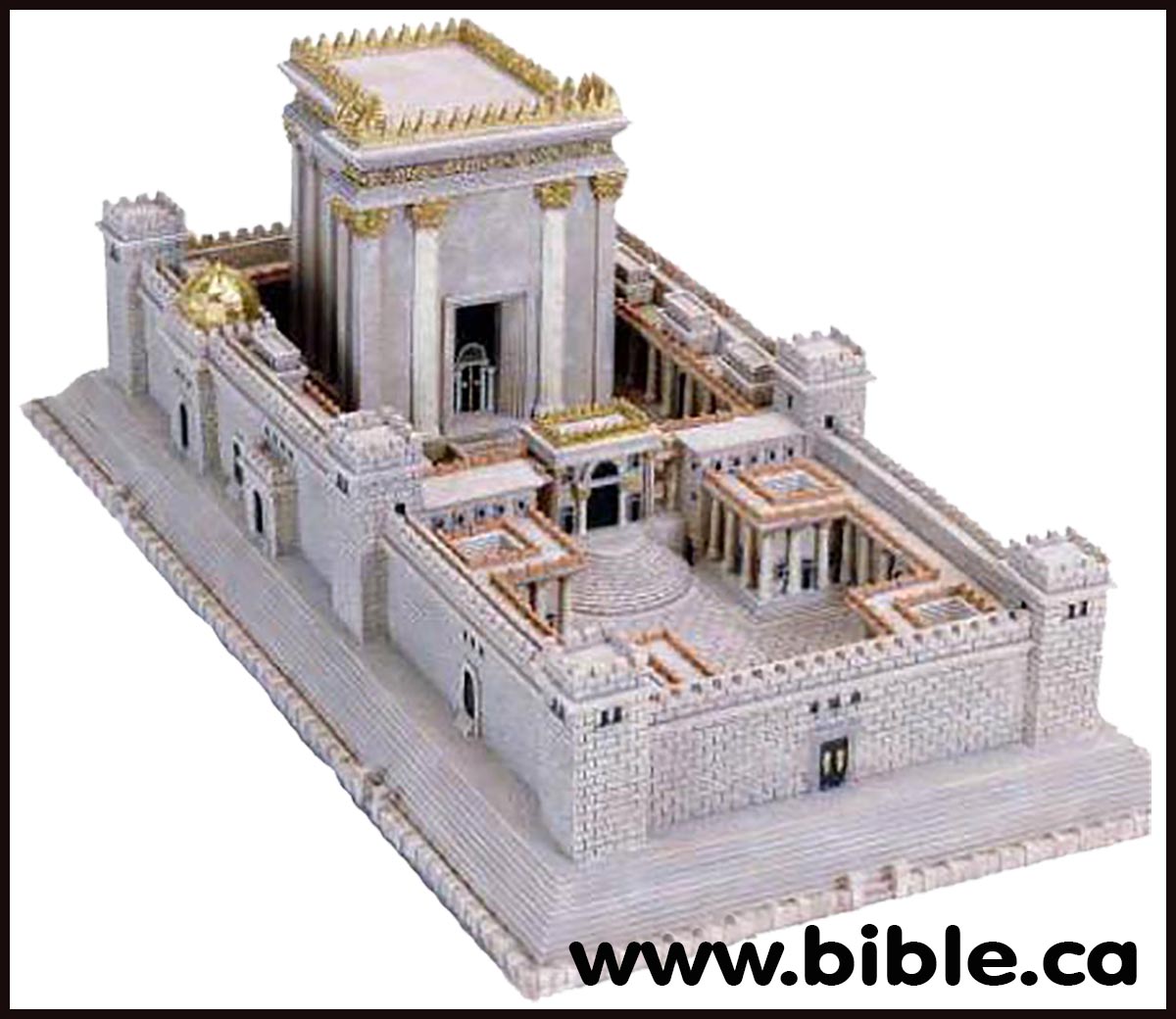
a. "They gave the money which was weighed out into the hands of those who did the work, who had the oversight of the house of the Lord; and they paid it out to the carpenters and the builders who worked on the house of the Lord; and to the masons and the stonecutters, and for buying timber and hewn stone to repair the damages to the house of the Lord, and for all that was laid out for the house to repair it." (2 Kings 12:11–12)
b. "Then they gave it into the hands of the workmen who had the oversight of the house of the Lord, and the workmen who were working in the house of the Lord used it to restore and repair the house. They in turn gave it to the carpenters and to the builders to buy quarried stone and timber for couplings and to make [roof] beams for the houses which the kings of Judah had let go to ruin." (2 Chronicles 34:10–11)
D. Cisterns were essential for each house, town and date back to the time of Abraham:
1. Each house would have its own
cistern:

a. "‘Do not listen to Hezekiah, for thus says the king of Assyria, “Make your peace with me and come out to me, and eat each of his vine and each of his fig tree and drink each of the waters of his own cistern," (2 Kings 18:31)
2. Cisterns are dug out of solid
bedrock and often had capstones:

a. "and houses full of all good things which you did not fill, and hewn cisterns which you did not dig, vineyards and olive trees which you did not plant, and you eat and are satisfied," (Deuteronomy 6:11)
b. "He [Uzziah, king of Judah] built towers in the wilderness and hewed many cisterns, for he had much livestock, both in the lowland and in the plain. He also had plowmen and vinedressers in the hill country and the fertile fields, for he loved the soil." (2 Chronicles 26:10)
c. "“They captured fortified cities and a fertile land. They took possession of houses full of every good thing, Hewn cisterns, vineyards, olive groves, Fruit trees in abundance. So they ate, were filled and grew fat, And reveled in Your great goodness." (Nehemiah 9:25)
3. Wives are metaphoric cistern whose water is for the husband alone:
a. "Drink water from your own cistern, and fresh water from your own well. Should your springs be dispersed abroad, Streams of water in the streets? Let them be yours alone And not for strangers with you. Let your fountain be blessed, And rejoice in the wife of your youth. As a loving hind and a graceful doe, Let her breasts satisfy you at all times; Be exhilarated always with her love. For why should you, my son, be exhilarated with an adulteress And embrace the bosom of a foreigner?" (Proverbs 5:15–20)
4. The body in old age is like a collapsed cistern:
a. "Remember Him before the silver cord is broken and the golden bowl is crushed, the pitcher by the well is shattered and the wheel at the cistern is crushed;" (Ecclesiastes 12:6)
5. Cisterns needed to be cleaned out of mud and sediment at the bottom:
a. "Then they took Jeremiah and cast him into the cistern of Malchijah the king’s son, which was in the court of the guardhouse; and they let Jeremiah down with ropes. Now in the cistern there was no water but only mud, and Jeremiah sank into the mud." (Jeremiah 38:6)
b. Cisterns collect muck, sild, mud, garbage and debris that needs to cleaned out regularly the same way decorative ponds, pools and fountains need cleaning today.
c. Pictured is
the author excavating a 2000 year old cistern that was in use form 100 BC down
to 69 AD. It had a 1.5 foot deep layer of water laid mud at the bottom of the
15 foot diameter round bottomed cistern. Hundreds of pottery sherds were found
along with animal bones, grinding stones, coins that were 2000 years old.

d. Broken pottery sherds were used to lift water from a cistern. Many “button bottom” bases from “bag storage jars” were found at the bottom of the cistern which may have fallen in as they were used to collect water: "Whose collapse is like the smashing of a potter’s jar, So ruthlessly shattered That a sherd will not be found among its pieces To take fire from a hearth Or to scoop water from a cistern.”" (Isaiah 30:14)
6. Rock quarried from Cisterns was used in construction then when complete would be filled with water for mixing mortar.
a. “Preparations for Construction. As noted above, in our discussion of traditional Palestinian building methods, the construction process began with the collection of materials by the owner and his family. These materials, including stones, large quantities of mortar and lime, and timber for roofing, were usually stored at the site. In addition, a water cistern was often excavated at the site a year before beginning construction of the house, in order to ensure sufficient water supply for the construction process. It is clear, therefore, that considerable time often elapsed before construction began. … Sometimes, such piles of collected building material caused a public nuisance, especially if they were left in the midst of a residential area for a considerable period of time.” (The Palestinian Dwelling in the Roman to Byzantine Period, Yizhar Hirschfeld, p217, 1995 AD)
E. Lime Kilns: “Daniel’s Furnace of Fire”: Turns rock into powder after heating and hitting with a hammer: Jeremiah 23:29
1. “This construction lime was prepared by "baking" limestone in specially constructed kilns. The burnt lime was then slaked with water until a thick white mixture was obtained. A combination of the lime with aggregates such as sand or crushed quartz produced the lime-based cement. This high-quality bonding material made possible the construction of stone walls to full height. Its main function was to bond the stones in the wall and create a uniform inner and outer face. Layers of this type of mortar were also placed between the courses and cast into the wall's core.” (The Palestinian Dwelling in the Roman to Byzantine Period, Yizhar Hirschfeld, p224, 1995 AD)
2. Shadrach, Meshach and Abed-nego were thrown into a lime kiln:
a. Nebuchadnezzar’s furnace of fire was a lime kiln: "He commanded certain valiant warriors who were in his army to tie up Shadrach, Meshach and Abed-nego in order to cast them into the furnace of blazing fire. Then these men were tied up in their trousers, their coats, their caps and their other clothes, and were cast into the midst of the furnace of blazing fire. For this reason, because the king’s command was urgent and the furnace had been made extremely hot, the flame of the fire slew those men who carried up Shadrach, Meshach and Abed-nego. But these three men, Shadrach, Meshach and Abed-nego, fell into the midst of the furnace of blazing fire still tied up. Then Nebuchadnezzar the king was astounded and stood up in haste; he said to his high officials, “Was it not three men we cast bound into the midst of the fire?” They replied to the king, “Certainly, O king.” He said, “Look! I see four men loosed and walking about in the midst of the fire without harm, and the appearance of the fourth is like a son of the gods!” Then Nebuchadnezzar came near to the door of the furnace of blazing fire; he responded and said, “Shadrach, Meshach and Abed-nego, come out, you servants of the Most High God, and come here!” Then Shadrach, Meshach and Abed-nego came out of the midst of the fire." (Daniel 3:20–26)
b. Pottery kilns were too small to throw a man into.
c. A lime kiln is a huge structure large enough to hold many men inside.
d. However,
Nebuchadnezzar was also a prolific manufacturer of bricks stamped with
his name on it and the furnace of fire in the book of Daniel might possibly be
a special large brink kiln.
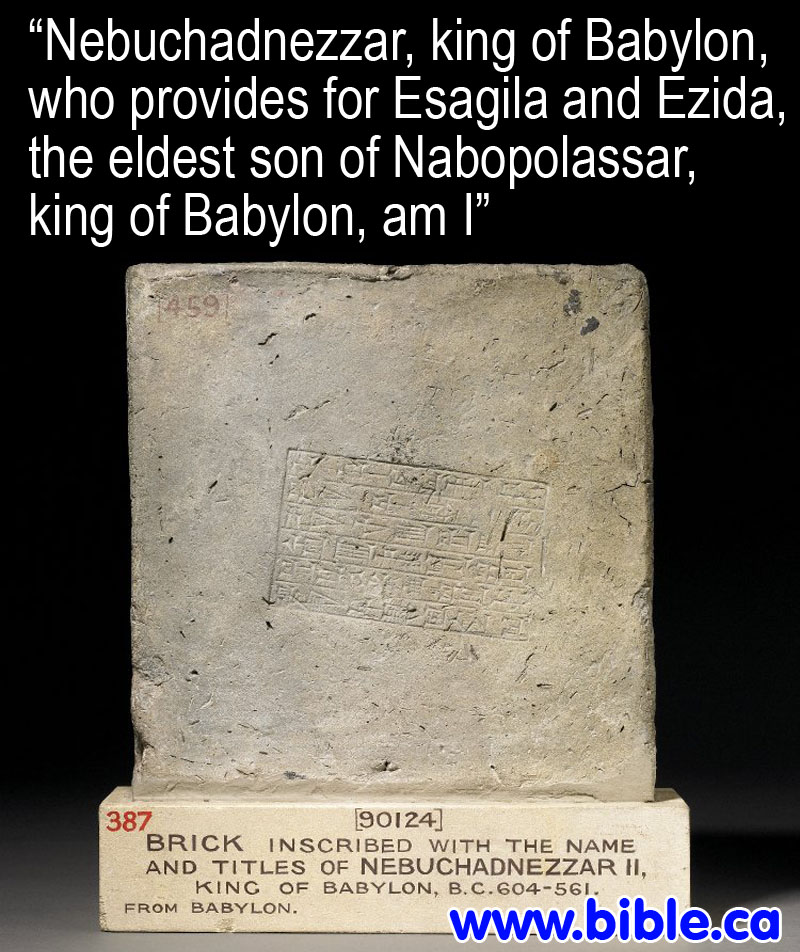
3. Lime kilns were factories that heated limestone rocks to high temperature and produced powered lime for concreate and mortar.
a. Once the rocks were heated, they would be shatter into powder with the hit of a large sedge hammer.
b. The powder was then mixed with water to create mortar and concrete.
c. Adding sand created morter for whitewashing.
d. Adding other inclusions like stone and quartz would create concrete.
4. Allusions to lime kilns destroying rock as a symbol of spiritual judgement and destruction:
a. “Is not My word like fire?” declares the Lord, “and like a hammer which shatters a rock?" (Jeremiah 23:29)
b. "His rock [god Ashur] will pass away because of panic, And his princes will be terrified at the standard,” Declares the Lord, whose fire is in Zion and whose furnace is in Jerusalem." (Isaiah 31:9)
c. If a lime kiln consumes rock, how much more flesh: "Your gold and your silver have rusted; and their rust will be a witness against you and will consume your flesh like fire. It is in the last days that you have stored up your treasure!" (James 5:3)
d. "Then the fire of the Lord fell and consumed the burnt offering and the wood and the stones and the dust, and licked up the water that was in the trench." (1 Kings 18:38)
e. "For the Lord your God is a consuming fire, a jealous God." (Deuteronomy 4:24)
f. “Truly, O Lord, the kings of Assyria have devastated the nations and their lands and have cast their gods into the fire, for they were not gods but the work of men’s hands, wood and stone. So they have destroyed them." (2 Kings 19:17–18)
g. “Truly, O Lord, the kings of Assyria have devastated all the countries and their lands, and have cast their gods into the fire, for they were not gods but the work of men’s hands, wood and stone. So they have destroyed them." (Isaiah 37:18–19)
5. Attacking kings would set fires at the foundations of city walls and gates in order to destroy them and gain access to the city:
a. Here is an allusion of God setting fire to the foundation of the “mountains” (kingdoms) just like these kings did to the foundations of walls and city gates!
b. "For a fire is kindled in My anger, And burns to the lowest part of Sheol, And consumes the earth with its yield, And sets on fire the foundations of the mountains." (Deuteronomy 32:22)
6. Furnaces of fire were generally used for burning garbage in the valley of Hinnom in Jerusalem or in each city or even each house.
a. "“If your hand causes you to stumble, cut it off; it is better for you to enter life crippled, than, having your two hands, to go into hell [Gehenna = valley of Hinnom], into the unquenchable fire," (Mark 9:43)
b. "So just as the tares are gathered up and burned with fire, so shall it be at the end of the age. “The Son of Man will send forth His angels, and they will gather out of His kingdom all stumbling blocks, and those who commit lawlessness, and will throw them into the furnace of fire; in that place there will be weeping and gnashing of teeth." (Matthew 13:40–42)
7. Pictured above is the Lime kiln at Kh. Maqatir used to burn limestone rocks in order to turn them to powdered limestone which was mixed with water to create mortar.
a. While this one pictured below is a pottery kiln, the lime kiln is 100 meters away and is about 3 times the diameter with 10 courses of rocks forming a circle in the bottom.
b. Lime kins were used by the invading Muslims in 650-750 AD to destroy church buildings by turning their stone walls into lime powder for plaster.
F. Limestone mortar “whitewashed tombs and walls”:
1. Bible passages:
a. “It is definitely because they have misled My people by saying, ‘Peace!’ when there is no peace. And when anyone builds a wall, behold, they plaster it over with whitewash; so tell those who plaster it over with whitewash, that it will fall. A flooding rain will come, and you, O hailstones, will fall; and a violent wind will break out. “Behold, when the wall has fallen, will you not be asked, ‘Where is the plaster with which you plastered it?’ ” Therefore, thus says the Lord God, “I will make a violent wind break out in My wrath. There will also be in My anger a flooding rain and hailstones to consume it in wrath. “So I will tear down the wall which you plastered over with whitewash and bring it down to the ground, so that its foundation is laid bare; and when it falls, you will be consumed in its midst. And you will know that I am the Lord. “Thus I will spend My wrath on the wall and on those who have plastered it over with whitewash; and I will say to you, ‘The wall is gone and its plasterers are gone, along with the prophets of Israel who prophesy to Jerusalem, and who see visions of peace for her when there is no peace,’ declares the Lord God." (Ezekiel 13:10–16)
b. “Woe to you, scribes and Pharisees, hypocrites! For you are like whitewashed tombs which on the outside appear beautiful, but inside they are full of dead men’s bones and all uncleanness." (Matthew 23:27)
c. "Then Paul said to him, “God is going to strike you, you whitewashed wall! Do you sit to try me according to the Law, and in violation of the Law order me to be struck?”" (Acts 23:3)
2. Lime mortar in home construction:
a. “A person may bring dirt and pile it up at the door of his house in the public way to knead it into mortar. [But if it is] to keep it there, lo, this is prohibited. And if another party came along and was injured by it, lo, this person is liable. And he should not knead the mortar on one side and build on the other side. But he should knead on the side at which he builds [T. B.M. 11:6].” (Jerusalem Talmud, y. B. Mes. 10:5, I.1.I–N)
b. “In addition to its use in the production of cement, lime was used to seal the walls of water cisterns as early as the Iron Age, or perhaps even earlier, in the Middle Bronze Age. Its first systematic use in private construction, however, came in the 5th-4th centuries B.C.E. In classical literature, lime is called asbestos or chalix, the latter being the term from which the Latin word calx [Chalk] is derived. This construction lime was prepared by "baking" limestone in specially constructed kilns. The burnt lime was then slaked with water until a thick white mixture was obtained. A combination of the lime with aggregates such as sand or crushed quartz produced the lime-based cement. This high-quality bonding material made possible the construction of stone walls to full height. Its main function was to bond the stones in the wall and create a uniform inner and outer face. Layers of this type of mortar were also placed between the courses and cast into the wall's core.” (The Palestinian Dwelling in the Roman to Byzantine Period, Yizhar Hirschfeld, p224, 1995 AD)
3. Cisterns could have cracks that leak water Cisterns so they were often plastered with one or two layers of hydraulic lime mortar:
a. “For My people have committed two evils: They have forsaken Me, The fountain of living waters, To hew for themselves cisterns, Broken cisterns That can hold no water." (Jeremiah 2:13)
b. Although dug out of solid rock, fishers, cracks or porous rock would leak water over time.
c. Plaster was applied which would fix any possibility of leaks.
d. In
2013, the author was excavating a cistern at Khirbet el-Maqatir and two coins
were found embedded in the plaster of the cistern dating it to the Hasmonean
period (c. 78 BC) that likely fell into the lime powder, sand and other
inclusions they would mix together. Here we have some workman’s coin that fell
out of his pocket 2000 years ago!


G. Nails:
|
"The words of wise men are like goads, and masters of these collections are like well-driven nails; they are given by one Shepherd." (Ecclesiastes 12:11) |
1. The nails of the first century at the time of Jesus were Roman Iron nails.
a. Roman nails were made in all sizes from large spikes 12 inches long to sandal tacks ¼ inch long.
b. Jesus was crucified with long Roman nails like the ones pictured above
2. Nails were used in Solomon’s temple:
a. "David prepared large quantities of iron to make the nails for the doors of the gates and for the clamps, and more bronze than could be weighed; and timbers of cedar logs beyond number, for the Sidonians and Tyrians brought large quantities of cedar timber to David." (1 Chronicles 22:3–4)
b. "The weight of the nails was fifty shekels of gold. He also overlaid the upper rooms with gold." (2 Chronicles 3:9)
3. Wooden idols were nailed to keep them from falling over:
a. “They decorate it with silver and with gold; They fasten it with nails and with hammers So that it will not totter. “Like a scarecrow in a cucumber field are they, And they cannot speak; They must be carried, Because they cannot walk! Do not fear them, For they can do no harm, Nor can they do any good.”" (Jeremiah 10:4–5)
4. Jesus was nailed to the cross:
a. "So the other disciples were saying to him, “We have seen the Lord!” But he said to them, “Unless I see in His hands the imprint of the nails, and put my finger into the place of the nails, and put my hand into His side, I will not believe.”" (John 20:25)
b. "this Man, delivered over by the predetermined plan and foreknowledge of God, you nailed to a cross by the hands of godless men and put Him to death." (Acts 2:23)
5. The old Covenant law of Moses was nailed to the cross (abolished) and replaced by the law of Christ
a. "having canceled out the certificate of debt consisting of decrees against us, which was hostile to us; and He has taken it out of the way, having nailed it to the cross." (Colossians 2:14)
H. Flat Roofs: Wattle and daub flat clay roofs with wooden beams and thatch:
|
Solomon’s Temple had a flat roof. |
1. How flat roofs were constructed in the Bible: “Wattle and daub construction”
a. Large wooden beams would be placed on the top of stone walls to carry the entire load of the roof and humans occupying the area.
b. Smaller wooden beams would set perpendicular spaced closely to hold thatch
c. Thatch mixed with mud would be laid on the smaller beams, compressed and allowed to dry.
d. Multiple layers of pure mud or clay would be spread on top up to 6 inches deep.
e. Each layer would be rolled with a 10 kg stone roller and allowed to dry.
f. Seasonal maintenance is required to fix sags, leaks etc. by laying new clay and rolling it.
g. In the
cooler winter months Oct – March (planting season) seeds would often sprout on
the roof but pulling them out by the roots would damage the roof, so they were
left to die in the scorching heat come summer. They would be cut and a new
layer of clay would be spread and rolled.

2. Josiah repairs the flat roof on the Temple of Solomon:
a. "Then they gave it into the hands of the workmen who had the oversight of the house of the Lord, and the workmen who were working in the house of the Lord used it to restore and repair the house. They in turn gave it to the carpenters and to the builders to buy quarried stone and timber for couplings and to make beams for the houses which the kings of Judah had let go to ruin." (2 Chronicles 34:10–11)
3. Roofing beams vs. roof dust in the eyes: “dokos” vs. roof dust “karphos”
a. “And why do
you look at the speck [Greek: karphos, ie sawdust]
that is in your brother’s eye, but do not notice the log [Greek: dokos] that is in your own eye? “Or how can
you say to your brother, ‘Let me take the speck out of your eye,’ and behold,
the log [Greek: dokos] is in your own eye?
“You hypocrite, first take the log [Greek: dokos] out of your own eye, and then
you will see clearly to take the speck out of your brother’s eye.” (Mt 7:3-5;
Lk 6:41-42)

Wattle and daub roof construction at Marisa (photo Brian Peterson)
b. Definitions:
i. dokos: “a piece of heavy timber such as a beam used in roof construction or to bar a door, beam of wood” (BADG, dokos)
ii. karphos: “any small dry body, esp. dry stalk, as of the dry sticks of cinnamon; of rice-straw, generally, in plural, dry twigs, chips, straws, bits of wool, such as birds make their nests of” (A Greek-English Lexicon, LSJ, Karpos)
c. Other uses of dokos as a large roofing beam:
i. “⌊I have⌋ two daughters who ⌊have not known⌋ a man. I will bring them out to you, and you may use them how it pleases you. Only, to these men do not do anything unjust, ⌊because⌋ they entered under the roof of my beams [Greek: dokos].” (Genesis 19:8, LXX)
ii. “This battering ram is a vast beam of wood [Greek: dokos] like the mast of a ship; its fore-part is armed with a thick piece of iron at the head of it, which is so carved as to be like the head of a ram, whence its name is taken.” (Josephus, Wars of the Jews 3.214)
4. Interesting facts about flat clay roofs:
a. In 1446 BC Moses mandated that roofs must have railings to protect people from falling off:
i. “When you build a new house, you shall make a parapet (railing) for your roof, so that you will not bring bloodguilt on your house if anyone falls from it." (Deuteronomy 22:8)
ii. What is interesting is that all modern law derives from the law of Moses as a legal system which assigned liability for causing injury to others due to your own negligence.
iii. For example, if someone trips and is injured because you did not salt the ice on your property, they can sue for negligence to recoup hospital expenses and lost wages.
iv. The Workman’s Compensation Board will shut down a job site if men are working on a flat industrial roof that the workers have not set up a temporary fence around the perimeter.
b. Mud roofs would spout grass until the heat of summer then they would wither like the parable of the sower in rocky soil:
i. "Let them be like grass upon the housetops, Which withers before it grows up;" (Psalm 129:6)
ii. "‘Therefore their inhabitants were short of strength, They were dismayed and put to shame; They were as the vegetation of the field and as the green herb, As grass on the housetops is scorched before it is grown up." (2 Kings 19:26)
iii. "“Therefore their inhabitants were short of strength, They were dismayed and put to shame; They were as the vegetation of the field and as the green herb, As grass on the housetops is scorched before it is grown up." (Isaiah 37:27)
5. Uses of flat clay roofs in the Bible:
a. General living space:
i. "And they arose early; and at daybreak Samuel called to Saul on the roof, saying, “Get up, that I may send you away.” So Saul arose, and both he and Samuel went out into the street." (1 Samuel 9:26)
ii. "On that day (70 AD), the one who is on the housetop and whose goods are in the house must not go down to take them out." (Luke 17:31)
iii. "Whoever is on the housetop must not go down to get the things out that are in his house." (Matthew 24:17)
iv. "On the next day, as they were on their way and approaching the city, Peter went up on the housetop about the sixth hour to pray." (Acts 10:9)
v. "Now the house was full of men and women, and all the lords of the Philistines were there. And about 3,000 men and women were on the roof looking on while Samson was amusing them." (Judges 16:27)
vi. "It is better to live in a corner of a roof Than in a house shared with a contentious woman." (Proverbs 21:9)
viI. "Twelve months later he was walking on the roof of the royal palace of Babylon." (Daniel 4:29)
b. Used to dry crops and storage:
i. "But she had brought them up to the roof and hidden them in the stalks of flax which she had laid in order on the roof." (Joshua 2:6)
c. Hiding place at times of war:
i. "But she had brought them up to the roof and hidden them in the stalks of flax which she had laid in order on the roof." (Joshua 2:6)
ii. "The oracle concerning the valley of vision. What is the matter with you now, that you have all gone up to the housetops?" (Isaiah 22:1)
d. Watchtower for security:
i. "Now David was sitting between the two gates; and the watchman went up to the roof of the gate by the wall, and raised his eyes and looked, and behold, a man running by himself." (2 Samuel 18:24)
e. Public broadcasting of messages:
i. “What I tell you in the darkness, speak in the light; and what you hear whispered in your ear, proclaim upon the housetops." (Matthew 10:27)
ii. "“Accordingly, whatever you have said in the dark will be heard in the light, and what you have whispered in the inner rooms will be proclaimed upon the housetops." (Luke 12:3)
iii. "So they pitched a tent for Absalom on the roof, and Absalom went in to his father’s concubines in the sight of all Israel." (2 Samuel 16:22)
f. Worship of YHWH and pagan shrines:
i. "So the people went out and brought them and made booths [ie. Feast of Booths] for themselves, each on his roof, and in their courts and in the courts of the house of God, and in the square at the Water Gate and in the square at the Gate of Ephraim." (Nehemiah 8:16)
ii. "And those who bow down on the housetops to the host of heaven, And those who bow down and swear to the Lord and yet swear by Milcom," (Zephaniah 1:5)
I. Pitched Roofs with ceramic tiles: Lk 5:19 (see above, Jesus house)
Conclusion:
1. While it is popular to call Jesus a carpenter, it is clear that Jesus was a “master builder” known as a stonemason.
a. Stonemasons (archi-tekon) were the top authority in first century construction and would also possess carpentry skills as a subtrade.
b. The word “tekton” simply means “constructor” without telling us whether it was wood or stone.
2. The only indication we have that Jesus was a MERE carpenter as opposed to a master builder “stonemason” comes from Justin Martyr in 150 AD who says Jesus manufactured yolks and plows.
a. This may be true.
b. A master builder stonemason, had to know how to construct entire houses including wooden flat or pitched roofs, doors and windows.
3. Jesus used both stonemason and carpentry illusions in His teaching.
4. Jesus, our master builder:
a. Master builder of the Universe as “creator”
b. Master builder of homes as a secular physical trade for income as a man on earth.
c. Master builder of the spiritual temple, which is the Church of Christ!
By Steve Rudd 2017: Contact the author for comments, input or corrections
|
Jesus your messiah is waiting for you to come home! |
|
|
Why not worship with a first century New Testament church near you, that has the same look and feel as the Jewish Synagogue in your own home town. As a Jew, you will find the transition as easy today as it was for the tens of thousands of your forefathers living in Jerusalem 2000 years ago when they believed in Jesus the Nazarene (the branch) as their messiah. It’s time to come home! |
|
By Steve Rudd: Contact the author for comments, input or corrections.
Go to: Main Ancient Synagogue Start Page
